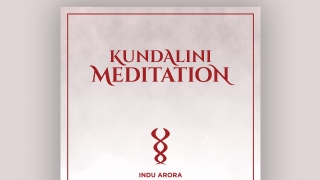
Kundalini Meditation
2 exclusive guided meditation on Kundalini and breath

![]() 4 minutes
•
10/18/20
4 minutes
•
10/18/20
Look around you right now, wherever you are. What do you see? Your laptop? Your furry co-worker asking for a head scratch? A new book singing its siren song to lure you away from everything on your to-do list? Or maybe you’re outside: you see some trees, their leaves gently whispering in the wind, a cool lake with the mist lingering just above the surface, a red-tailed hawk calling out as it glides above the treetops… What do all these things have in common?
They all have gunas. Gunas are a part of Samkhya philosophy—the main school of thought at the foundation of Yoga and Ayurveda. Samkhya tells us that there are three basic qualities that inform the nature of everything. These qualities are the gunas.
Defined as “a quality, an attribute, or the inherent nature of something,” a guna can also mean “rope; that which bridges or connects but also ties, restrains.” (Are you feeling the foreshadowing of duality? We will discuss that in greater depth another time. Each guna is a strand that ultimately strengthens the rope. They’re all separate, but they all work together.
Prakruti—Divine Nature—that which gives birth to everything and anything—is inherently nothing BUT gunas. (We say Prakruti has gunas, but it’s more accurate to say it IS gunas.) If we can imagine it, see it, taste it, feel it, or contemplate it, it has gunas. Everything is made up of gunas.
So, think about that…everything is a combination of these three gunas: Sattva, Rajas, and Tamas. As we begin to notice these qualities, we fine-tune our experience in a way that is most beneficial to our evolving self. Let’s take a closer look at each of these.
Sattva means “truth,” and is anything that is used or presented in a way that brings it closest to its true purpose. Sattva brings clarity, illumination, brilliance. Think of a time when you felt that light switch on, when you had that moment of clarity. Got it? Sattva.
Rajas is movement. It propels toward something, whether positive or negative, progressive or regressive, constructive or destructive. Does this feel familiar? The feeling that you need to DO something. The feeling something is happening. Right. That’s it.
Finally, there’s Tamas. You know Tamas—the guna of heaviness, dullness, darkness—that which is suppressed, repressed, or an unawakened form of something. But before you judge tamas too harshly, remember, that this is the guna that lets us sleep, that brings the stillness and void required for clarity of mind and transformation. (It’s probably pretty dark inside that caterpillar’s cocoon, too!)
There are colors associated with the gunas. Can you feel what they are? Consider what you know about Sattva, Rajas, and Tamas, and take a guess!
Pause for a moment and consider: What colors is your mind producing today? Further, how does one shift the mind from tamas or rajas to sattva? And should we?
Sattva brings us closest to peace, contentment, and clarity. With this state of mind, we can make informed decisions, proper discernments, and take our best action. Awareness of the three gunas helps us to maintain balance and harmony.
Let’s take the body as an example. Tamas provides the form of the body. It has the ability to hold, to taste. Tamas is that which binds together. Because of this structure, we can have experience. We can have purposeful action. Rajas is our heartbeat, our breath, the life force that moves through the body every second. Sattva—clarity—is the landmark of health. When we feel restless, insecure, dull, lightness brings clarity allowing us to see the body as a purposeful instrument.
Keep in mind that one guna is not better than another. Don’t get too attached to sattva, for example. We need all the gunas. We can’t have clarity of mind without restful sleep. We can’t have restful sleep without activity. You get the idea.
So, let’s give a moment of thanks for the gift of the gunas. Through constant observation and microadjustments to our course, we can steer toward balance and harmony in our lives. This awareness has greatly benefitted me in my own life in making wiser decisions and bringing clarity to knowing when to act and when to rest. I wholeheartedly wish the same for you.
STAY IN TOUCH
Start your FREE subscription to Indu Arora's newsletter to get more on Yoga and Ayurveda here
Say hello on Instagram
Subscribe to my Youtube Channel.

2 exclusive guided meditation on Kundalini and breath

"This Ayurvedic herbal mixture for healing the skin brings beauty, color and glowing complexion to the face. It is a wonderful and most authentic product." Vasant Lad

Is mulabandha all about contraction? Is it only about the physical level?